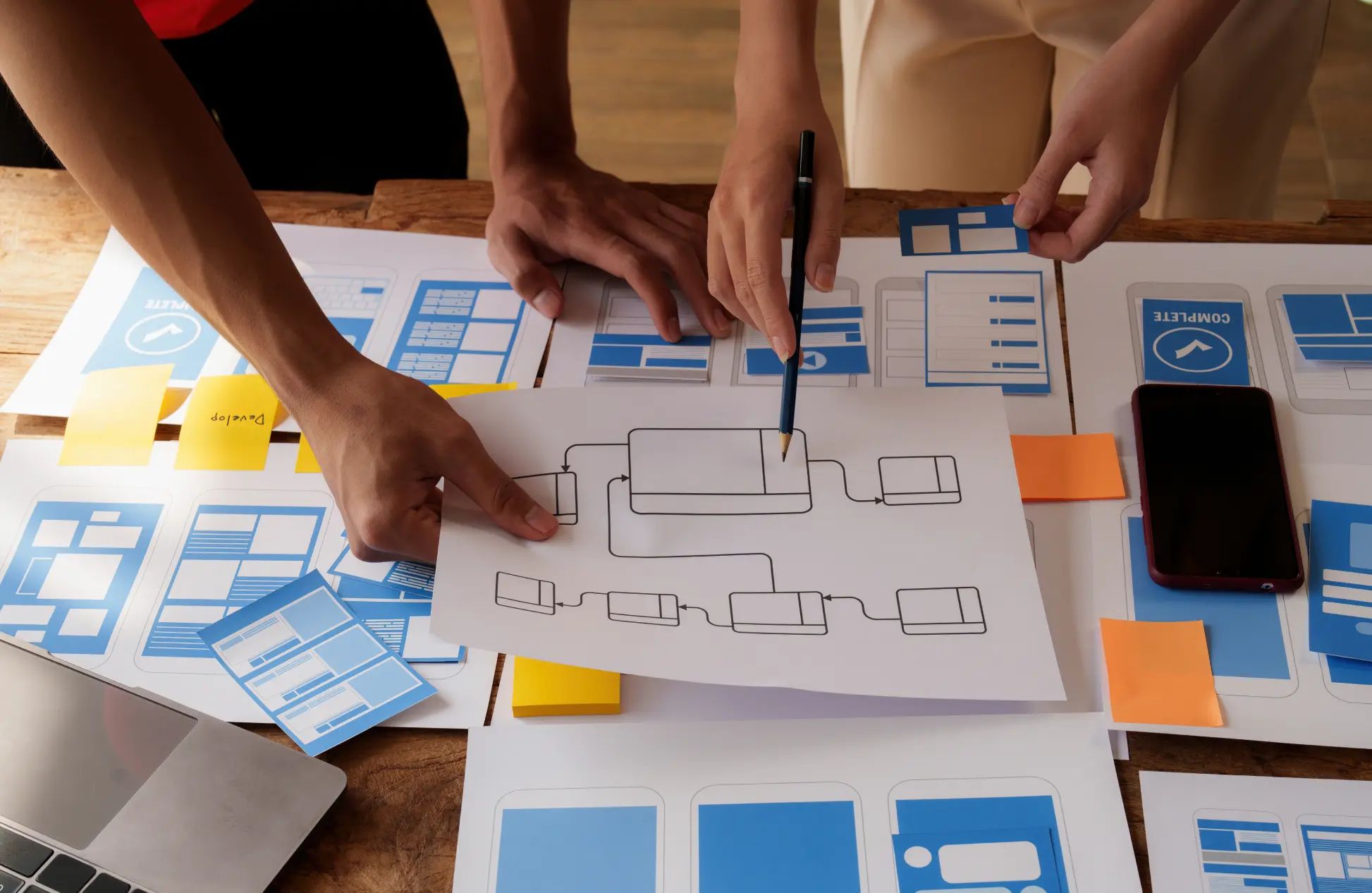If you’re thinking about creating your own website, you’re probably wondering: how long does it really take to build a site? Whether you’re planning to do it yourself or hire a professional, understanding the timeline is key to planning your project effectively. Building a website isn’t just a matter of putting a few pages together—it’s a process that involves careful planning, design, development, and testing.
Typical Website Timeline

So, let’s get straight to it: how long does it usually take to build a website? The timeline can vary significantly based on factors like the complexity of the site, the method you choose (DIY vs. hiring a professional), and the number of revisions you go through. For a simple website using a builder like Wix or Squarespace, you might be able to get everything done in 2 to 4 weeks. For a custom site designed and developed by a professional, expect the timeline to stretch to 6 to 12 weeks, or even longer for more complex projects.
However, it’s important to remember that these are just average estimates.
The actual time it takes to build your website could be shorter or longer, depending on your specific needs and circumstances. For example, a website that requires extensive custom coding, complex e-commerce functionalities, or integration with third-party platforms will naturally take longer to complete than a basic informational site.
Importance of Having a Properly Setup Website
A well-built website is more than just a digital presence—it’s the foundation of your online brand. Whether you’re launching an e-commerce store, a blog, or a portfolio, a properly set-up website enhances user experience, improves your search engine rankings, and supports your business goals.
The time you invest in getting it right will pay off in the long run, ensuring that your site is not only functional but also engaging and effective.
Moreover, a poorly built website can lead to a host of problems down the road. Issues like slow loading times, broken links, and a lack of mobile optimization can frustrate users and drive them away from your site. This is why it’s crucial to allocate enough time and resources to build your website correctly from the start. It’s not just about getting it done quickly—it’s about doing it right.
Brief Summary of What Involves in Creating a Website
Before we dive into the details, here’s a quick overview of the main steps involved in building a website:
- Picking a Domain Name: The unique address where your site will live.
- Setting Up Hosting: Choosing a place to store your website’s files.
- Planning the Website Structure: Organizing your pages and content logically.
- Designing the Website: Crafting the look and feel of your site.
- Developing the Website: Bringing your design to life with code.
- Launching the Website: Making your site live for the world to see.
Each of these steps involves specific tasks and decisions that will impact your overall timeline. Understanding what’s involved at each stage can help you plan more effectively and set realistic expectations for your project.

What Does Building a Website Involve?
Key Components
Building a website involves several key components that contribute to the overall timeline. Each step is crucial and requires careful consideration.
Picking a Domain Name
The first step is choosing a domain name—a task that can be quick if you have something specific in mind, or it can take a bit longer if you need to brainstorm ideas. Ideally, this should take no more than a few days.
However, it’s worth taking the time to choose a domain name that’s memorable, easy to spell, and relevant to your brand. After all, your domain name is the first thing people will see when they visit your site, so it’s important to make a good impression.
Additionally, you’ll need to check the availability of your desired domain name. Popular domain names are often already taken, so you may need to get creative or consider alternative extensions (like .net, .org, or .co) if your first choice isn’t available.
Setting Up Hosting
Once you’ve chosen a domain, you’ll need to set up hosting. This process can be as simple as selecting a hosting plan and connecting your domain, which might take a few hours to a day.
If you’re opting for more complex hosting solutions, like a VPS or dedicated server, it could take a bit longer to configure everything. Hosting is where your website’s files will be stored, so choosing a reliable hosting provider is critical for ensuring your site’s performance and uptime.
There are several types of hosting to consider:
- Shared Hosting: The most affordable option, but your site shares server resources with other sites.
- VPS Hosting: More expensive than shared hosting but offers better performance and more control.
- Dedicated Hosting: The most expensive option, providing an entire server dedicated to your site.
Choosing the right hosting plan depends on your website’s needs, such as expected traffic volume, the complexity of the site, and your budget.
Planning the Website Structure
Planning the structure of your website involves deciding what pages you need, how they’ll be organized, and what content will go where. This step is crucial and can take anywhere from a few days to a week, depending on how detailed your site will be. A well-organized website structure helps users navigate your site easily and improves your search engine rankings by making it easier for search engines to crawl and index your pages.
During this stage, you’ll also want to consider the user journey. What actions do you want visitors to take on your site? How can you guide them through your content in a way that leads to conversions? Answering these questions will help you create a site structure that supports your business goals.
Designing The Website
Designing your website is where the fun begins. If you’re using a template or a website builder, you could be done in as little as 1 to 2 weeks. However, custom designs often require more time, especially if you’re working with a designer. Expect this stage to take anywhere from 2 to 6 weeks.
The design phase involves creating wireframes (basic layouts of your pages), selecting color schemes, choosing typography, and incorporating branding elements like logos and images. If you’re working with a designer, you’ll likely go through several rounds of revisions to fine-tune the design and ensure it aligns with your vision.
Remember, good design isn’t just about aesthetics—it’s about functionality, too. A well-designed website is easy to navigate, with clear calls to action and a layout that guides users toward the information or actions you want them to take.
Developing The Website
Development is the process of turning your design into a functional website. This involves coding, setting up databases, and integrating any special features. For a simple site, this might take 1 to 2 weeks, but for more complex sites, you could be looking at 4 to 8 weeks or more.
Development can be broken down into front-end development (what users see and interact with) and back-end development (the behind-the-scenes functionality). Depending on your site’s requirements, development might also include setting up e-commerce capabilities, user authentication systems, content management systems (CMS), and more.
After the initial development phase, the website should undergo thorough testing to identify and fix any bugs or issues before launch. This testing phase is essential to ensure that your site functions correctly across different devices and browsers and provides a seamless user experience.
DIY Approach
Using Builders
Website builders like Wix, Squarespace, or WordPress offer a straightforward way to create a site quickly. If you’re going the DIY route and using a builder, you could realistically launch your site in 2 to 4 weeks, depending on how much customization you want. Builders provide pre-designed templates and drag-and-drop interfaces that make it easy to build a site without any coding knowledge.
However, while website builders are quick and easy to use, they do have limitations. Customization options may be limited, and you might not have full control over certain aspects of your site. If you’re looking for a simple site that doesn’t require a lot of custom features, a website builder can be a great option.
Without Builders
If you prefer to build your site without a builder—using raw HTML/CSS or a framework like Bootstrap—the timeline will be longer. Without the ease of drag-and-drop tools, expect to spend at least 4 to 8 weeks on the project, depending on your skill level and the site’s complexity. This approach requires more technical knowledge but offers greater flexibility and control over the design and functionality of your site.
Building a website from scratch allows you to create a truly unique site that’s tailored to your specific needs. However, it’s also more time-consuming and requires a higher level of expertise. If you’re comfortable with coding and want full control over your site, this approach might be worth the extra time investment.
Pros & Cons
- Pros: Full control over every aspect of the site, no ongoing subscription fees for a builder service, satisfaction of creating something unique.
- Cons: Requires technical skills, can be time-consuming, potential for costly errors if you’re not experienced.

Hiring a Professional
Using an Agency
Working with a web development agency typically results in a high-quality, custom website, but it comes with a longer timeline. Agencies often need 6 to 12 weeks or more to complete a project, depending on the complexity and the number of revisions.
When you hire an agency, you’re not just getting a website—you’re getting a team of experts who can handle every aspect of the project, from design to development to ongoing maintenance. This approach is ideal for businesses that need a highly customized site with advanced features, or for those who don’t have the time or expertise to build a site themselves.
However, the trade-off is that working with an agency is more expensive and requires more time than using a website builder or doing it yourself. Additionally, you’ll need to factor in time for meetings, feedback, and revisions throughout the process.
Hiring In-House
Hiring an in-house developer or designer offers flexibility and the ability to work on your site continuously. This approach can sometimes speed up the process, but even with a dedicated team member, expect to spend 4 to 8 weeks on a basic site, with more complex projects taking several months.
The advantage of having an in-house developer is that they can focus solely on your project, making it easier to implement changes quickly and make ongoing updates as needed. However, this approach also comes with higher costs, as you’ll need to pay a full-time salary and possibly provide benefits.
Factors That Influence Time
Number of Pages
The more pages your website has, the longer it will take to build. A simple five-page site is much quicker to complete than a 50-page site, especially if each page requires custom design and content.
When planning your site, consider which pages are essential and which can be added later. Prioritizing your content can help you launch your site more quickly and add additional pages as your business grows.
Complexity of the Website
If your website needs advanced features like e-commerce, user accounts, or interactive elements, it will naturally take longer to build than a basic informational site.
For example, setting up an online store involves configuring product pages, setting up payment gateways, and ensuring that the checkout process is smooth and secure. Similarly, adding interactive elements like forums, user-generated content, or custom forms requires additional development time.
Additional Features & Integration
Integrating additional features such as payment gateways, third-party apps, or custom databases will extend your timeline. Each integration must be tested thoroughly to ensure it works smoothly with the rest of your site.
For example, if you’re integrating a customer relationship management (CRM) system, you’ll need to ensure that data flows correctly between your website and the CRM. This might involve custom coding, API integration, and extensive testing to avoid any disruptions to your business operations.
Revisions and Feedback
Revisions are a normal part of the website-building process, but they can add time. Each round of feedback and changes could extend your timeline by a few days to a week, so it’s important to plan for this.
To minimize delays, it’s helpful to set clear expectations and deadlines for feedback. Regular communication with your developer or designer can also help keep the project on track and reduce the need for multiple rounds of revisions.
Estimating Your Website Build Time
Have a Plan
Start with a detailed plan. Outline what you need, what features you want, and what your timeline looks like. Having a clear roadmap will help you stay on track and avoid delays.
Be Realistic About Timelines
It’s easy to underestimate how long things will take. Always build in extra time for unexpected issues or changes. If you think something will take a week, it’s safer to allocate two.
Consider Scalability of the Website
Think about the future when planning your website. If you plan to add more features down the line, it might be worth spending extra time now to ensure your site can scale easily. This might involve choosing a more flexible content management system, selecting a hosting plan that can grow with your site, or building in the ability to add new functionalities as your business evolves.

FAQs
How long does it take to build a basic website?
A basic website typically takes 2 to 4 weeks if you’re using a website builder or pre-designed template. Custom sites can take 6 to 12 weeks or more.
Can I speed up the website-building process?
Yes, having a clear plan, making quick decisions, and minimizing revisions can help speed up the process. Using a website builder also tends to be quicker than custom development.
What factors can delay the website build?
Common delays include unclear requirements, numerous revisions, waiting on content, and technical issues during development.
Is it faster to build a website myself or hire a professional?
Building it yourself with a website builder is often faster for simple sites. However, for custom designs and features, hiring a professional, though slower, can deliver a more polished final product.
What should I do if I need a website quickly?
Consider using a website builder or a pre-designed template for a fast turnaround. If you need a custom site, communicate your timeline clearly with the developer or agency and prioritize essential features.



